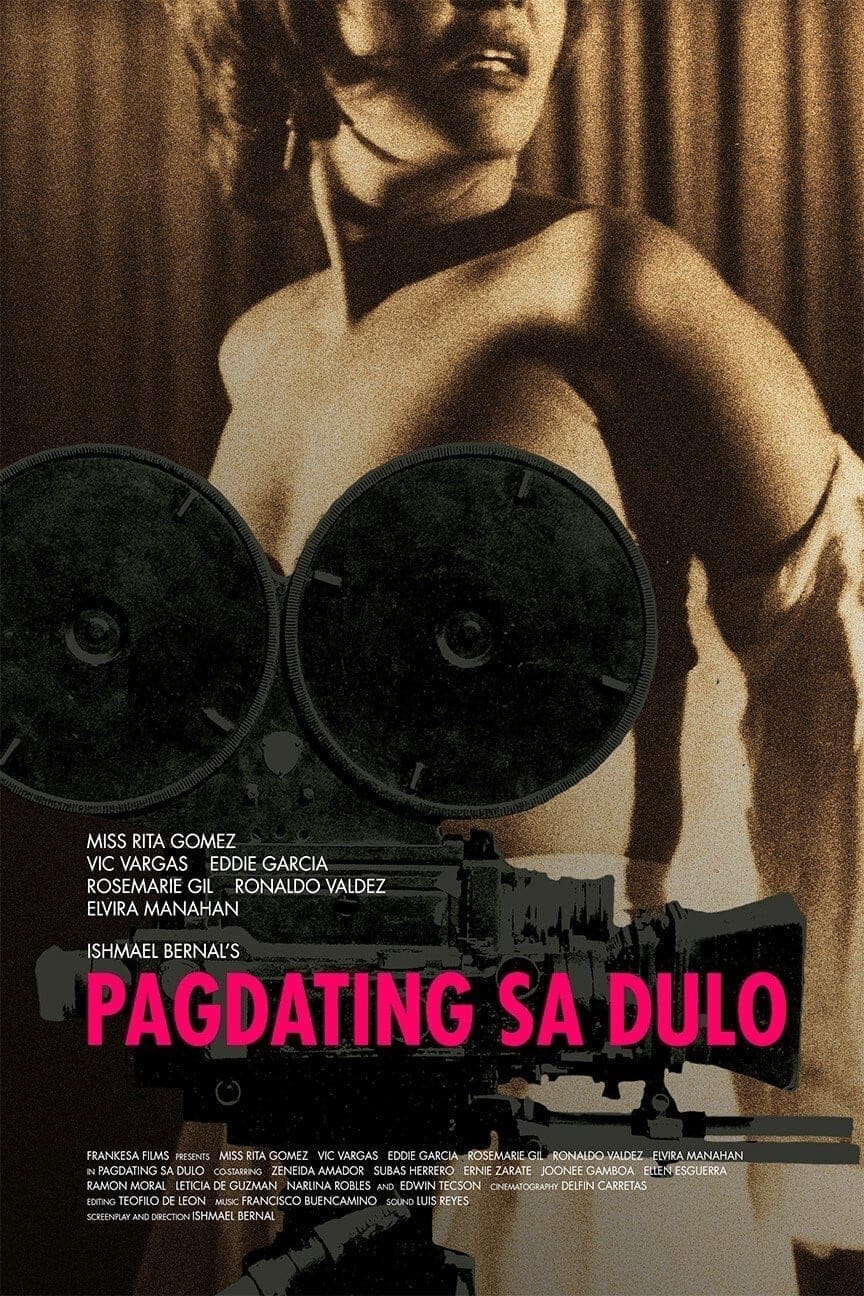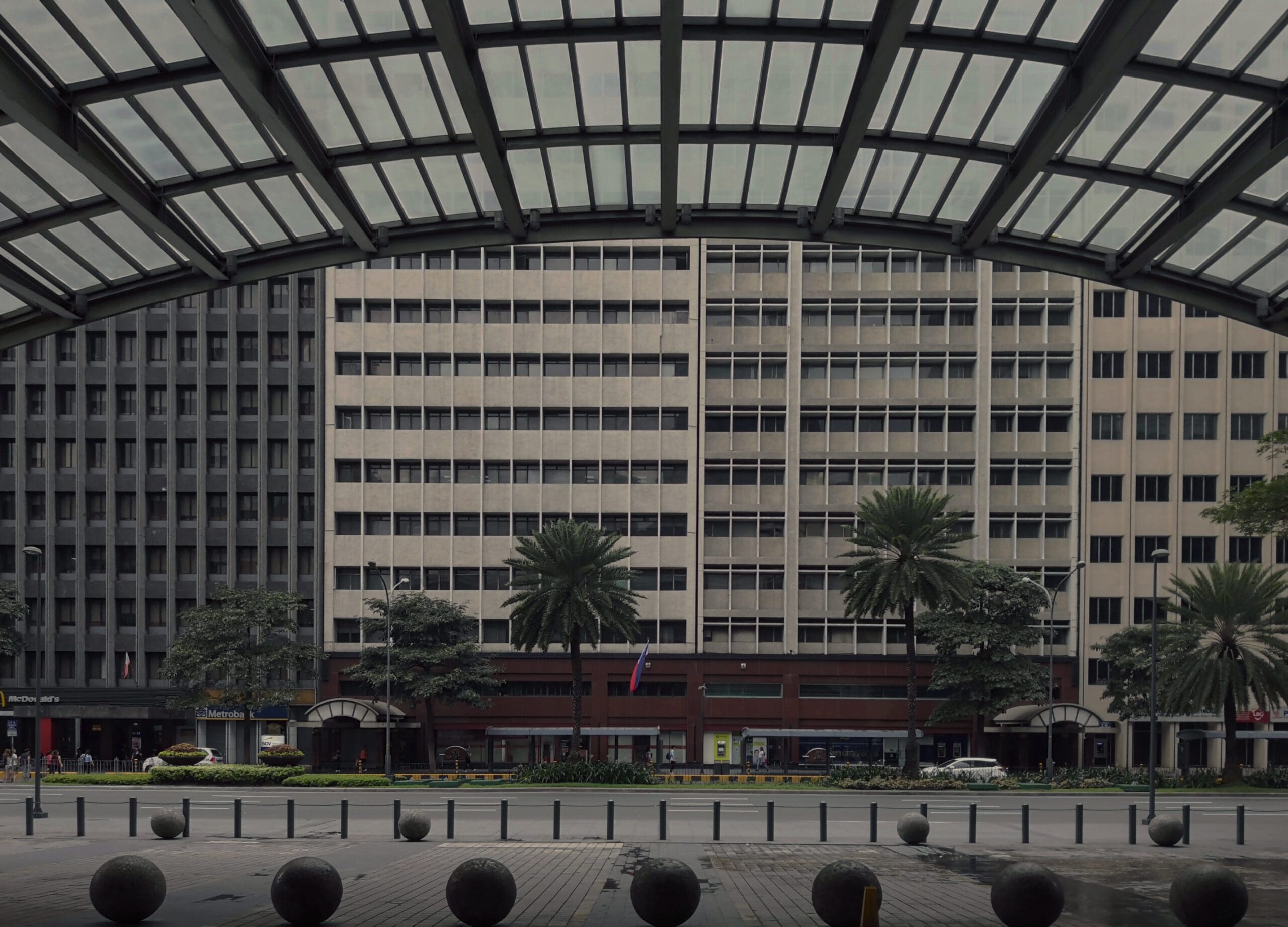Photograph by Cenon at Mav
Karl Castro, co-founder of online architecture archive group Brutalist Pilipinas, lists five movies that display the capital’s architectural wonders.
One of the hallmark movements in architecture that defined much of the twentieth century and continues to permeate Manila’s aesthetic is Brutalism. The architectural style entered the Philippines in the 1960s, around the same time that Manila began to urbanize alongside the start of Makati’s business district. Since then, brutalism has become associated with our modern identity—and has been well documented and preserved in Philippine cinema.
Brutalist Pilipinas, an online architecture archive and heritage advocacy group, aims to reignite citizens’ interest in these once-lauded architectural wonders that now litter urban streets and, consequently, have become mundane and underappreciated. And since there’s no better time capsule for the spirit of a certain era than films, Karl Castro, co-founder of the advocacy group, discusses five Filipino films that capture the resplendence of select brutalist Metro Manila structures. His picks below.
Soltero (1984)
Directed by Pio de Castro III. Written by Bienvenido M. Noriega Jr. Starring Jay Ilagan, Rio Locsin, Chanda Romero. Produced by Experimental Cinema of the Philippines.
The film
“Soltero is the story of a young bachelor who enjoys moderate success and stability but wrestles with a deep-seated fear of ending up perpetually alone. Produced by the state agency Experimental Cinema of the Philippines (ECP), its quiet melancholy is a stark contrast to the bombast of previous ECP productions like Oro Plata Mata (1982) and Himala (1982).
The film is an interesting time capsule of yuppie life in early eighties Makati: the plush office and its incidental office friends, the new condominium towers (gloriously spacious by today’s standards), the occasional nights out for dinner and a play, the Volkswagen Beetle parked at sunset by Manila Bay. Jay Ilagan as the protagonist Crispin masterfully shuttles between determination and despair as his social circle begins to crumble: death in the family, the waning of his barkada, and despite his most valiant propositions, his fruitless attempts at love.
In a commentary published in a local newspaper, Behn Cervantes gives his fellow director Pio a suggestion that may pique brutalism fans: ‘Instead of [Crispin] being with his gang all the time, would the loneliness of a Pen lobby have been more clear?'”
The structure
“Manila Film Center. A pivotal conversation happens when Crispin and RJ (Chanda Romero) hang out by the MFC columns.”
Santa Claus is Coming to Town! (1982)
Directed by Elwood Perez. Written by Toto Belano, with Iskho Lopez and Jose Javier Reyes. Starring Robert Arevalo, Liza Lorena, Marissa Delgado, Raul Aragon, Alicia Alonzo, Mila Ocampo, Johnny Wilson, Tony Carrion, Bert Martinez, Snooky Serna, Maricel Soriano, Gabby Concepcion, William Martinez, Albert Martinez. Produced by Regal Films.
The film
“Intended as an inspiring family tale for the Metro Manila Film Festival, this film is the story of several middle-class neighbors whose entangled relationships and bourgeois comforts are strained by scandal and misfortune.
In one household, the patriarch, a model employee in an insurance company, is accused by his neighbor and coworker of embezzling funds. In another home, a single mother is resistant to the return of her estranged husband. Oblivious to their parents’ squabbles, their children have minds and feelings of their own. Amid the bustle of the holidays, rumors, jealousy, and materialism take their toll on all the families; a close encounter with death hastens their reconciliation.
Santa Claus is set against the backdrop of an ongoing economic crisis that closely mirrored the real state of the times. Amid a banking crisis, bailouts were made increasingly in favor of Marcos cronies; the situation was so bad that the government needed to borrow more than USD 1 billion from the International Monetary Fund, World Bank, and several American banks; compliance with loan conditions negatively impacted economic growth.”
The structure
“Ramon Cojuangco Building. The fictional insurance company is housed in the RCB and figures prominently in the first act.”
Yesterday, Today, and Tomorrow (1986)
Directed by Emmanuel H. Borlaza. Written by Jose Javier Reyes. Starring Vilma Santos, Snooky Serna, Maricel Soriano, Richard Gomez, Eddie Garcia, Gabby Concepcion. Produced by Regal Films.
The film
“Corina (Vilma Santos) is a feisty woman who has never found a good match among her many suitors. She meets Teddy, a widower and close friend of her parents. Their age gap is staggering: she was the flower girl at Teddy’s wedding decades earlier. Teddy’s daughters reject Corina. Despite all the objections, the marriage continues. The plot thickens when she gets involved with the dashing young Neil (Gabby Concepcion), who is married (rather unhappily) with kids.”
The structure
“Hyatt Terraces Baguio. Corina and Neil scoot off to Hyatt Baguio for their tryst.”
Pagdating sa Dulo (1971)
Written and directed by Ishmael Bernal. Starring Rita Gomez, Vic Vargas, Eddie Garcia, Rosemarie Gil, Ronaldo Valdez, Elvira Manahan. Produced by Mever Films and Frankesa Films.

The film
“The film follows a taxi dancer played by Rita Gomez, and a taxi driver played by Vic Vargas who are plucked out of poverty and get thrown into the film industry by a film director played by Eddie Garcia. The story follows these characters as they deal with success and identity, money and fame.
Pagdating sa Dulo was actually Bernal’s debut film, which doubles as a commentary and criticism of both the film industry and oppressive politics within the country.”
The structure
“Tanghalang Pambansa. Eddie Garcia ruminates on the role of cinema with Rita Gomez outside the CCP.”
Working Girls (1984)
Directed by Ishmael Bernal. Written by Amado Lacuesta Jr. Starring Hilda Koronel, Rio Locsin, Chanda Romero, Carmi Martin, Maria Isabel Lopez, Baby Delgado, and Gina Pareño. Produced by Viva Films.

The film
“The sex comedy Working Girls tracks the story of seven women, all working in various capacities within the Makati central business district. The film was penned by Amado Lacuesta, an investment banker. (After the success of Working Girls, he ditched his banking career to become a full-time screenwriter—a drastic pay cut.) The power dressing wardrobe was designed by Cesar Gaupo. The film is a picture of women navigating the friction between corporate ambition and domestic obligation. Its lighthearted antics belie the serious issues that informed its production.
1984 was an interesting time. Martial Law had technically been lifted three years earlier, but the Marcos family continued to retain all the powers of its dictatorship. Ninoy Aquino had just been shot on the tarmac. The first elections since 1972 were held, and the opposition reduced the reigning majority.
Women were at the forefront of rising against the dictatorship in particular, and the patriarchy in general; the umbrella organization GABRIELA (General Assembly Binding Women for Reforms, Integrity, Equality, Leadership, and Action) was born. Their manifesto released the following year captures the Filipina zeitgeist: “We who have been called the weaker sex will no longer be cowed. We who have been relegated to the home will no longer be confined. In unity, we will raise our collective voices, we will build our collective strength.”
It is a turbulent backdrop that surfaces in subtle snatches, like a secretary seen shredding the telephone directory’s yellow pages for confetti, but perhaps most prophetically in the arc of Carla (Hilda Koronel): a lady executive who dutifully steers the company through crisis until she finally takes the helm. The theme song recurs like an annunciation: Another day has just been born.“
The structures

“Makati CBD. The film opens and closes with Ayala Avenue.”
Brutalism Pilipinas started off as a passion project and has grown into a 28,000+ strong Instagram and Facebook based heritage advocacy. Their goal is to promote and educate people about heritage preservation and adaptive reuse while creating a virtual database of brutalist architecture. As the founder’s say, the page’s mission and relevance stay on as long as built heritage is threatened. The not-for-profit project only supports itself through its prints and wearable merchandise.
